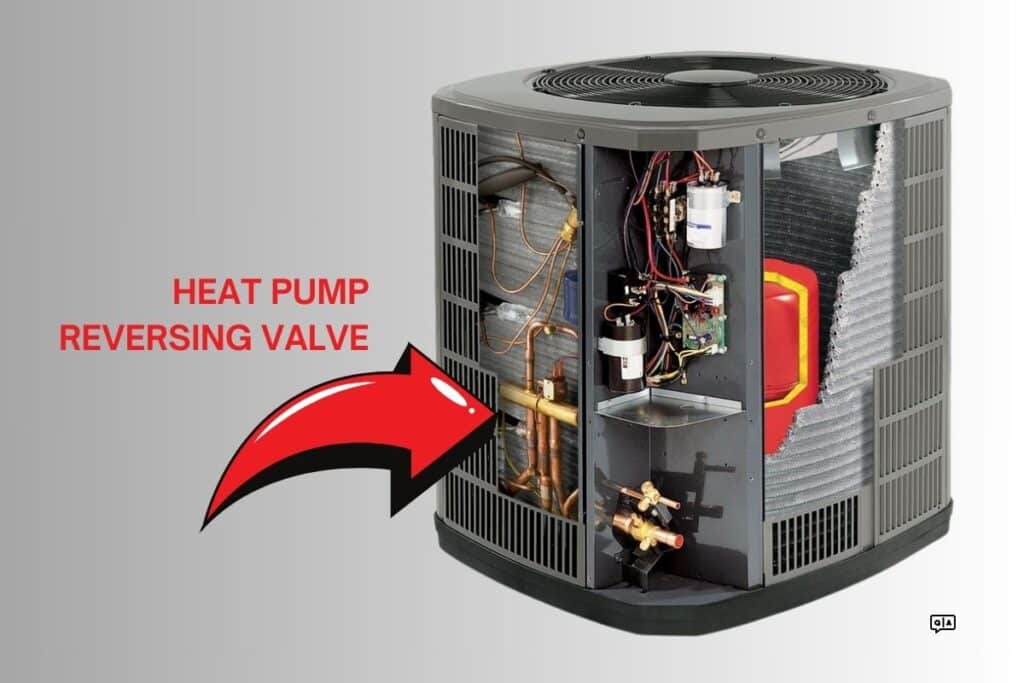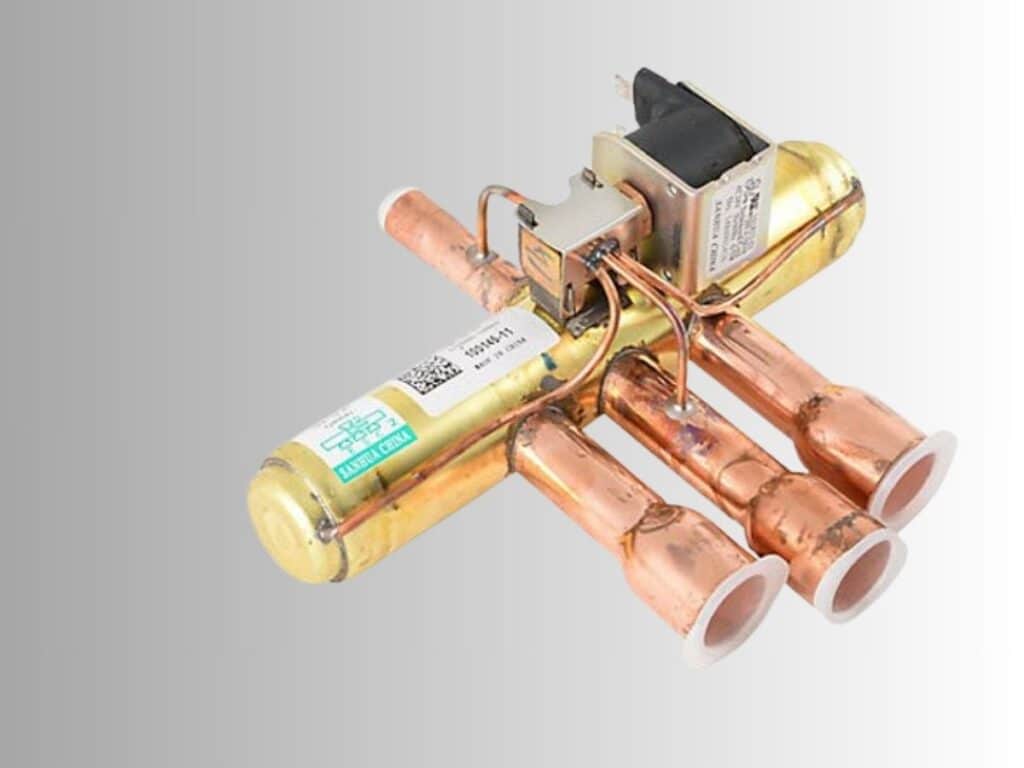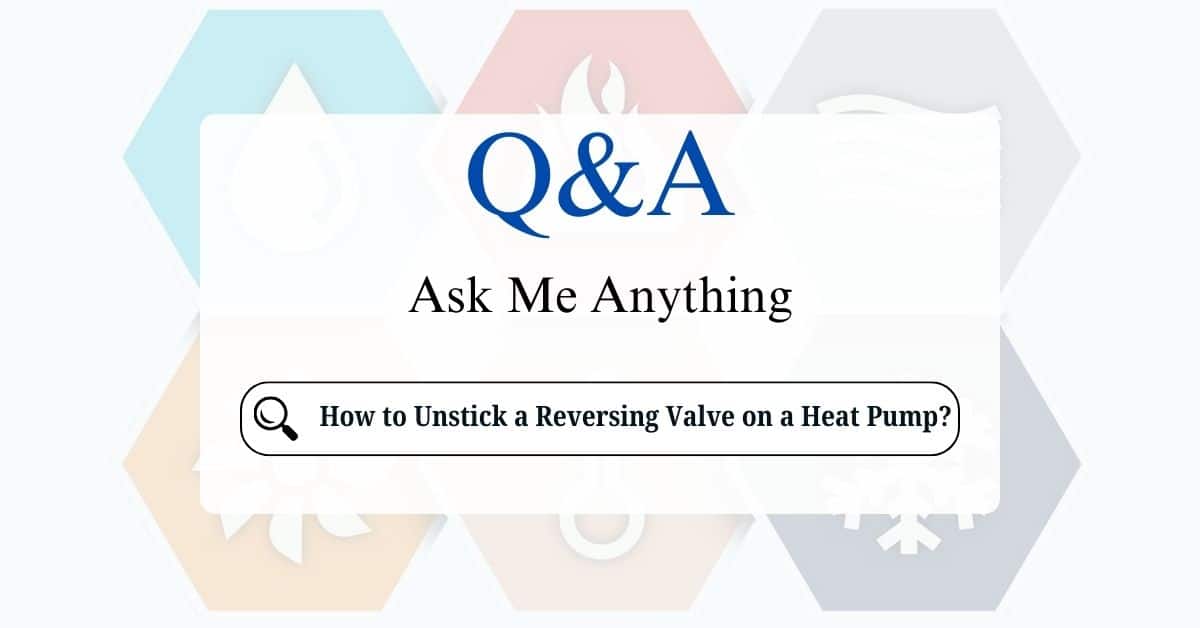The reversing valve in a heat pump is a critical component that directs refrigerant flow, allowing the system to switch between heating and cooling modes. When this valve becomes stuck, it disrupts the system’s ability to operate correctly. Using a strong magnet or tapping the valve are effective techniques that HVAC professionals sometimes use for minor mechanical issues.
Before diving into troubleshooting, confirm the symptoms of a stuck reversing valve:
- The heat pump fails to switch between heating and cooling modes.
- You hear the compressor running, but the air temperature remains unchanged.
- No “click” sound is audible when the system attempts to change modes.
- Frost or ice forms on the outdoor coil when in heating mode.
Step 1. Turn Off the Power to the Heat Pump
- Shut off the thermostat and turn off power to the heat pump at the circuit breaker to ensure safety.
- Wait for a few minutes to allow the system to depressurize slightly, which can aid in freeing the valve.
Step 2. Inspect the Reversing Valve
- Locate the reversing valve near the compressor in the outdoor unit. It is a cylindrical metal valve with several copper tubes connected to it.
- Perform a visual inspection to check for physical damage, corrosion, or refrigerant leaks. Leaks or damage require professional repair or replacement.

Step 3. Gently Tap the Valve
- Over time, internal components in the reversing valve can become stuck due to dirt, debris, or mechanical wear.
- Avoid excessive force, which can damage the valve or surrounding tubing.
Using a Magnet to Unstick the Reversing Valve
1. Obtain a Strong Magnet
Use a powerful magnet, such as a rare-earth neodymium magnet, as it generates a strong magnetic field capable of influencing the internal components of the reversing valve.
2. Locate the Reversing Valve
The reversing valve is a cylindrical metal component near the compressor in the outdoor unit, with several copper tubes connected to it.
Identify the solenoid coil, which is part of the valve assembly.
3. Place the Magnet
Place the magnet directly on the solenoid coil or along the valve body with the heat pump powered on.
Slowly move the magnet around the valve. If the valve is stuck due to a mechanical issue, the magnetic field may help realign or release internal parts.
4. Listen for a Click
A functional valve should produce a “click” sound as the internal slider moves to switch refrigerant flow. If you hear the click, it means the valve has likely become unstuck.
Important Notes
- Use Caution with Magnets: Avoid using magnets near other sensitive components like circuit boards, as the magnetic field could interfere with electrical signals.
- Do Not Force: If the valve doesn’t respond to tapping or the magnet, forcing the issue could damage internal components. In such cases, further troubleshooting or replacement may be required.
Tapping the Reversing Valve
1. Gather a Soft Tool
Use a soft, rigid object like the handle of a screwdriver or a rubber mallet to avoid damaging the valve or surrounding components.
2. Gently Tap the Valve
With the system powered off, gently but firmly tap the reversing valve’s metal body. Avoid hitting the copper tubes, as they can be delicate and prone to damage.
Focus your taps on the center of the valve body where the internal slider is located.
3. Power On and Test
Turn the system back on and set the thermostat to switch modes (e.g., cooling to heating).
Listen for the click indicating the valve is switching, and check if the system operates correctly in the desired mode.
Step 4. Manually Trigger the Solenoid
- Reconnect the solenoid wires if they were disconnected during testing.
- With the power restored to the unit, manually activate the thermostat to switch modes (e.g., from heating to cooling).
- Listen for the solenoid clicking, indicating it attempts to move the valve.
If the solenoid clicks but the valve doesn’t switch, mechanical components inside the valve may still be stuck.
Step 5. Verify Refrigerant Pressure
- The reversing valve relies on adequate refrigerant pressure to switch positions. The valve may not function properly if the refrigerant level is too low.
- Check for refrigerant leaks: Look for oil stains around connections or hissing noises indicating a leak.
If you suspect a refrigerant issue, contact a licensed HVAC technician. Handling refrigerants requires special tools and EPA certification.
Step 6. Test the System
- Once you’ve addressed the stuck valve, test the system by toggling the thermostat between the heating and cooling modes.
- Allow the system to run in each mode for several minutes to confirm the reversing valve is operating correctly.
- Listen for proper operation, including the solenoid’s click and the refrigerant’s sound flowing as the valve switches modes.
When to Call a Professional
If these steps don’t work or are uncomfortable trying them, you should call a professional. A technician can thoroughly inspect and determine if the valve needs replacing or replacing. The average cost to replace a reversing valve is between $400–$700.

Replacing a reversing valve is a complex process that involves:
- Recovering refrigerant from the system.
- Cutting and brazing new valve connections.
- Recharging the system with the correct amount of refrigerant.
- Verifying pressure and system performance.
These tasks require specialized tools, knowledge, and certifications. Contact a licensed HVAC technician to handle valve replacement or refrigerant issues.
Preventing Reversing Valve Problems
- Regular Maintenance: Schedule annual heat pump tune-ups to clean and inspect components.
- Change Air Filters: Dirty filters can lead to improper airflow, affecting refrigerant pressure and valve operation.
- Monitor Refrigerant Levels: Low refrigerant can stress the reversing valve and other system components.
- Keep the Outdoor Unit Clean: Remove debris and keep the area around the outdoor unit clear to prevent dirt from entering the system.
Following these steps, you can troubleshoot and fix a stuck reversing valve. If the problem persists, consult an experienced HVAC professional to ensure your heat pump operates safely and efficiently.






